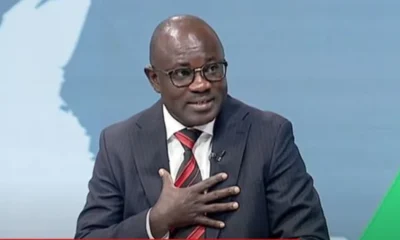The Supreme Court is, and has always been, a political body. That’s true of the justices, certainly. Over the course of the court’s history, most of them were chosen with political considerations in mind, to the point that many were politicians themselves. It’s true of the institution as well. The Supreme Court deals with political issues — not simply abstract questions of law — and operates within the context of political conflict and political struggle.
And the Supreme Court, right now, is an avowedly partisan institution, an unaccountable super-legislature controlled by men and women drawn from a cadre of conservative ideologues and apparatchiks, acting on behalf of the Republican Party and its allies. Whatever legitimacy it had retained was sacrificed in the drive to build the majority that seems poised to overturn Roe v. Wade and open the floodgates to harsh restrictions on the reproductive autonomy of millions of Americans.
When McConnell led the Senate Republican caucus in a blockade of President Barack Obama’s nominee for the Supreme Court in 2016 and then killed what remained of the judicial filibuster the next year to place Neil Gorsuch in the seat instead, they diminished the legitimacy of the court. When those same Republicans looked past a credible accusation of sexual assault to confirm Brett Kavanaugh in 2018, they again diminished the legitimacy of the court. And when, with weeks left before the 2020 presidential election, Republicans ignored their own rule from four years earlier — that an election-year vacancy “should not be filled until we have a new president” — to place Amy Coney Barrett on the bench in a rushed, slapdash process, they once more diminished the legitimacy of the court.
What’s more, their occasional protests notwithstanding (in a speech last year at the McConnell Center at the University of Louisville, Barrett insisted the court was “not comprised of a bunch of partisan hacks”), the court’s conservatives have done almost nothing to dispel the view that their majority is little more than the judicial arm of the Republican Party. They use “emergency” orders to issue sweeping rulings in favor of ideologically aligned groups; they invent new doctrines designed to undermine voting rights protections; and as we’ve just witnessed, they’ll let nothing, not even 50 years of precedent, stand in the way of a sweeping ideological victory.
No discussion of the Supreme Court’s legitimacy, or lack thereof, is complete without mention of the fact that its current composition is the direct result of our counter-majoritarian institutions. Only once in the past 30 years — in the 2004 election — has anything like a majority of the American electorate voted for a president who promised a conservative Supreme Court. The three members who cemented this particular conservative majority — Gorsuch, Kavanaugh and Barrett — were nominated by a president who lost the popular vote and were confirmed by senators representing far fewer than half of all Americans.

 General News1 week ago
General News1 week ago
 General News4 days ago
General News4 days ago
 Politics4 days ago
Politics4 days ago
 General News2 days ago
General News2 days ago





